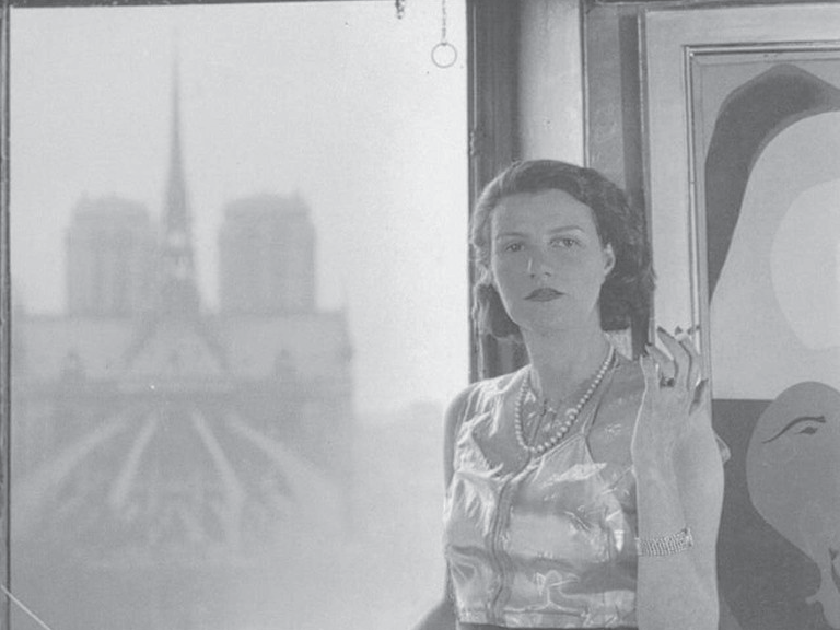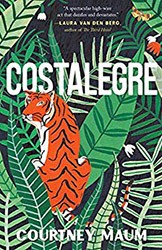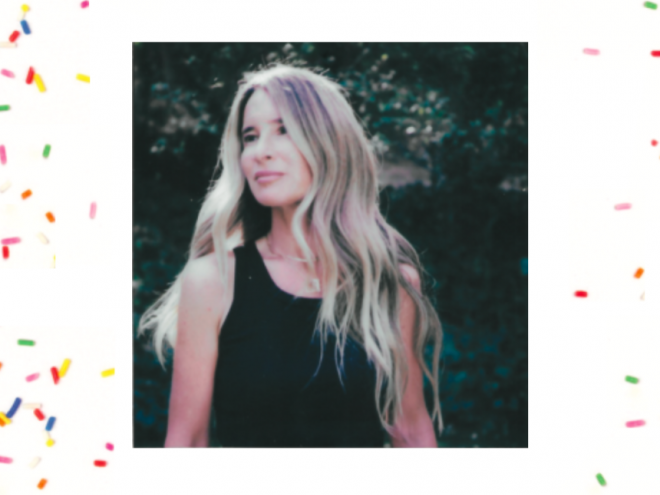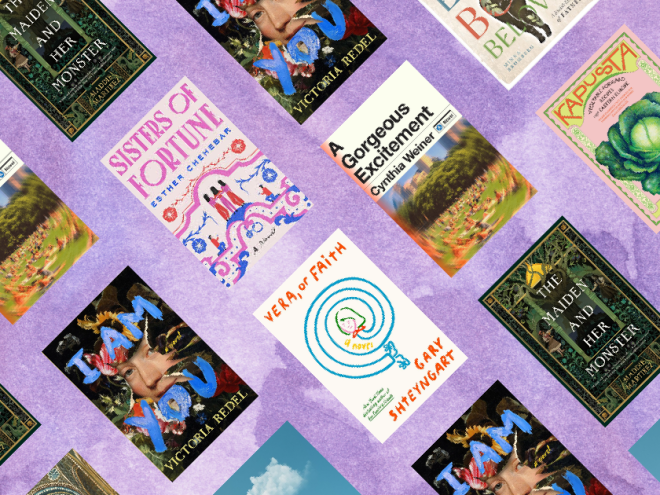
© Rogi André via Guggenheim Venices Twitter
Although I was raised Episcopalian, the fact that I thought this religion was pronounced “Eppah-skopp-lee-an” until the age of nine should give you some sense of the frequency and devotion with which my family attended church. The occasional church-going was my mother’s influence. My father was an atheist (to his Christian mother’s horror), and my mother was a milquetoast who believed that children should grow up with religion mostly because it seemed like all of her other friends’ children were.
I came of age in the tony bedroom town of Greenwich, Connecticut in the 1980s — a land where the entries were gated and the refrigerators were multiple, as were the extra-marital affairs. I have a Charlie Brown filter on the memories of my childhood: parents existed in the form of cologne vapors and exhaust fumes from their Range Rovers. They weren’t physically there.
My parents were the first couple in my middle school to get divorced — trend setters, to be sure. Because my home life was crumbling, I gravitated towards playmates who appeared to have stability in the familial department; my male best friend was a Swede whose family did unthinkably quaint things like cross country ski together after eating buckwheat pancakes; my female bestie was Argentinean, with more cousins than I could count. But it wasn’t until my first boyfriend, Evan, that I discovered a portal to a world where parents and their offspring were spiritually forced to stay together, or at least on Friday nights: Judaism.
Mysterious, unbreakable, as strong as an undertow, I was enthralled by the fact that Evan had a devotion to something higher than our nightly phone calls: he was studying for his Bar Mitzvah, a pursuit that sounded as difficult and as full of grace as a triple axel jump. He was one year older than me, and he had priorities.
Mysterious, unbreakable, as strong as an undertow, I was enthralled by the fact that Evan had a devotion to something higher than our nightly phone calls: he was studying for his Bar Mitzvah.
Throughout my young adulthood and into what will soon be my forty-first year, I’ve remained admirative — and envious — of my friends who find a sense of purpose in the religion that their parents gave them. This is particularly true of my Jewish friends, who seem to have a homing instinct that I wasn’t built with: the siren call to Shabbat, to seder, to the responsibility to sit shiva. I try to temper my attraction to Judaism with distance and respect — I understand that no matter how many Passover seders I am graciously included in, regardless of how much I love the spongy give of gefilte fish against my eager tongue, the Jewish faith will never be mine just because I admire it. This distance feels appropriate to me. This distance feels ordained.
But it was this same distance that kept me from committing to my third book, a novel I wanted to pen from the fictionalized point of view of Pegeen Vail, the Jewish art collector and Peggy Guggenheim’s only daughter. The story was going to be set in the pre-World War II years, when Peggy was helping A‑list artists and intellectuals get out of Europe before Hitler could imprison them. What right did I have to inhabit the bodies of a Jewish family? What right did I have to imagine what Jewish people would have felt like in the years before the holocaust?
I decided to proceed with my project when I realized how conflicted Peggy Guggenheim was about her own religion. Although she was raised in the elite Jewish society of uptown Manhattan — her maternal grandfather was president of the Temple Emanu-El synagogue, and Friday night Shabbat dinners took place at a popular hotel — Peggy was eager to get out from under her family’s thumb. It’s textbook teenagehood to start the liberation process by dating people your parents don’t approve of. Peggy’s offensive featured scores of subpar suitors who would later turn into husbands: not a single one of them Jewish. She would swap the officious Jewish community of uptown Manhattan for bohemian Paris, where she began collecting art scandalous enough to further alienate her from her family in New York.
During the research phase for COSTALEGRE, it proved exceptionally difficult to unearth Peggy’s feelings about her Jewish identity. In her memoir, Out of this Century, she quips that it was rather silly to be building a museum in Paris as German tanks were rolling in, and she comments only on the worth and beauty of the art that she was trying to get out of the country, not on the fact that she had to get herself, these artists, and their art out because a madman wanted her brethren dead.
Other people’s writings on Peggy’s relationship to Judaism proved even more frustrating, with some études coming across as downright antisemitic. There are scores of essays commemorating Peggy’s peculiar breed of avarice, along with pontification about her boisterous nose. It was in one of these seditious recollections that my sympathy for Peggy Guggenheim was cemented. In Francine Pose’s The Shock of the Modern the author writes of hostess Peggy: “Years later, friends would complain that, at her parties in Manhattan, she served only potato chips and cheap whiskey that she secretly decanted into empty bottles of single malt.” Why, this was a typical WASP move! Cheap liquor and stale Ripple Chips were Connecticut’s state food! And for God’s sake, could no one conjecture that perhaps Peggy Guggenheim had a worthier designation for her inheritance than hors d’oeuvres? It was well known (and the igniter of much gossip) that Peggy was one of the least wealthy Guggenheims. So what if she scrimped on snack food in order to purchase art? Shouldn’t that be a point of pride, regarding her legacy?
So what if she scrimped on snack food in order to purchase art? Shouldn’t that be a point of pride, regarding her legacy?
A fictionalized Pegeen, not Peggy, is the narrator of my novel, so I was keen on understanding the extent to which Peggy passed down the birthright of religion to her only daughter. This was an exciting line of inquiry for me, but it proved a short one. It was all Peggy could do to remember her offspring with the cutlery and linens when it came time to pack up a summer house: the spiritual education of her children proved beyond her. Peggy Guggenheim was uncomfortable as a socialite, uncomfortable as a Jew, uncomfortable as a mother, and her daughter was the inheritor of these vulnerabilities, existential conundrums that Pegeen ultimately couldn’t solve. On a visit to Paris recently, I went to the verdant cemetery Père Lachaise, intent on finding Pegeen’s grave. It took hours: she wasn’t on the gratis handout of notable dead people, but I finally found her in her paternal grandfather’s mausoleum: the family VAIL. As for Peggy Guggenheim, she is interred in the garden of her Venice palazzo, alongside her beloved dogs.
If Peggy Guggenheim had kept practicing her religion, would her family have stayed together? Would her daughter have lived longer? Would she have married once, and dallied less? Probably not, that’s just me projecting my childish wishes for security on a family that wasn’t mine. How Jewish was Peggy Guggenheim, was a question I grappled with throughout the writing of COSTALEGRE. Not Jewish enough?
I was faced with a Peggy Guggenheim who was trying, in some sense, to escape her religion, and the weight of all it meant.
When it came time to name my matriarch, I had to wrestle this question again. Would I give Lara’s mother, fictionalized as Leonora, a traditionally Jewish surname? But COSTALEGRE takes place in 1937, and to me — at least in my research — I was faced with a Peggy Guggenheim who was trying, in some sense, to escape her religion, and the weight of all it meant. When all is said and done, COSTALEGRE is about a daughter yearning for her mother’s time and love. Accordingly, I gave my fictional pairing a surname that means “belonging to a place,” which felt respectful of the Peggy Guggenheim I came to care for in my research — a woman who wanted desperately to belong to something outside of her own family, a woman who understood adoration more easily than love.
COURTNEY MAUM is the author of the novels Costalegre, Touch, I Am Having So Much Fun Here Without You, and the handbook Before and After the Book Deal: A writer’s guide to finishing, publishing, promoting, and surviving your first book, forthcoming from Catapult. Her writing has been widely published in such outlets as the New York Times; O, the Oprah Magazine; and Poets & Writers. She is the founder of the learning collaborative, The Cabins, and she also runs a service called “The Query Doula” where she helps writers prepare their manuscripts and query letters for an agent’s eyes.



